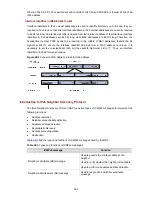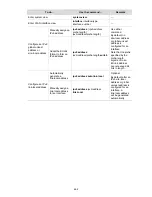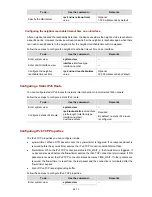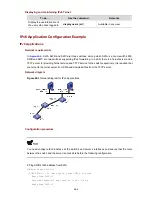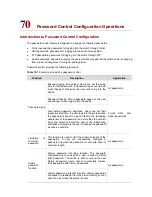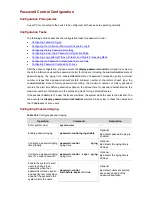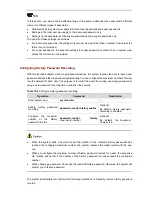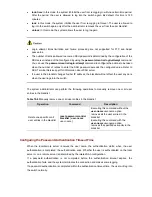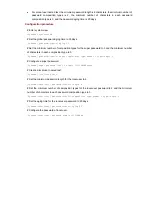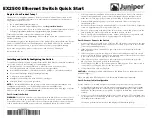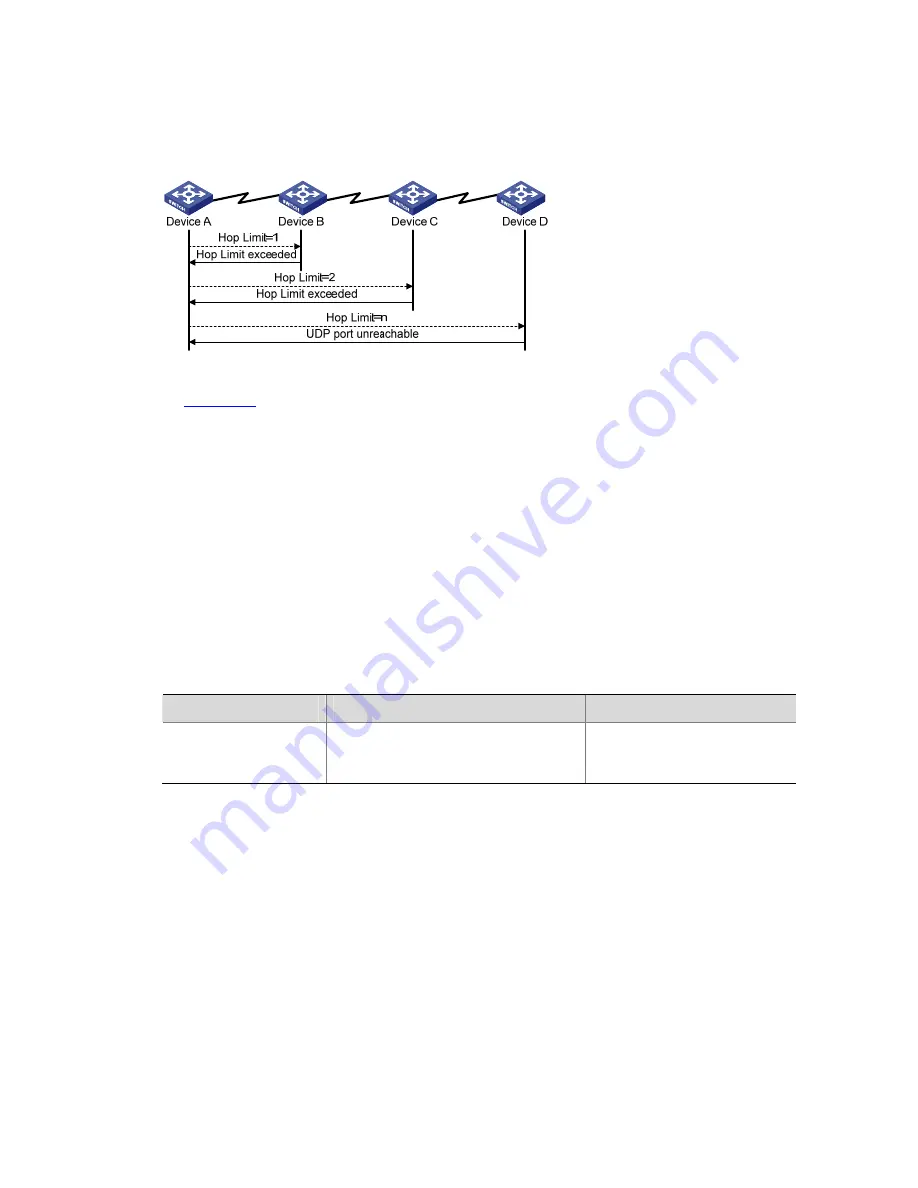
69-2
IPv6
of IPv6 packets from source to destination,
nt of failure.
Traceroute
The
traceroute ipv6
command is used to record the route
so as to check whether the link is available and determine the poi
Figure 69-1
Traceroute process
igure 69
As
F
-1
shows, the traceroute process is as follows:
z
he packet and
z
continues until the datagram reaches the destination host. As there is no application
returns a “port unreachable” ICMP error message.
z
The source receives the “port unreachable” ICMP error message and understands that the packet
has
the destination,
the route of the packet from source to
destination.
Follow these steps to trace
z
The source sends an IP datagram with the Hop Limit of 1.
If the first hop device receiving the datagram reads the Hop Limit of 1, it will discard t
return an ICMP timeout error message. Thus, the source can get the first device’s address in the
route.
z
The source sends a datagram with the Hop Limit of 2 and the second hop device returns an ICMP
timeout error message. The source gets the second device’s address in the route.
This process
using the UDP port, the destination
reached
and thus determines
route IPv6:
To do…
Use the command…
Remarks
oute IPv6
tracert ipv6
[
-f
first-ttl
|
-m
max-ttl
|
-p
port
|
-q
packet-num
|
-w
timeout
]*
remote-system
Required
Available in any view
Tracer
IPv6
-SFTP-TFTP Operation
.
wnload or upload files. For specific
operations, r
TP server configu
IPv6 TFTP configuration
F
d or
TFTP
IPv6 supports Trivial File Transfer Protocol (TFTP). As a client, the device can download files from or
upload files to a TFTP server. For details about TFTP, see
FTP
Configuration preparation
Enable TFTP on the TFTP server and specify the path to do
efer to TF
ration specifications.
ollow these steps to downloa
upload files to TFTP servers:

